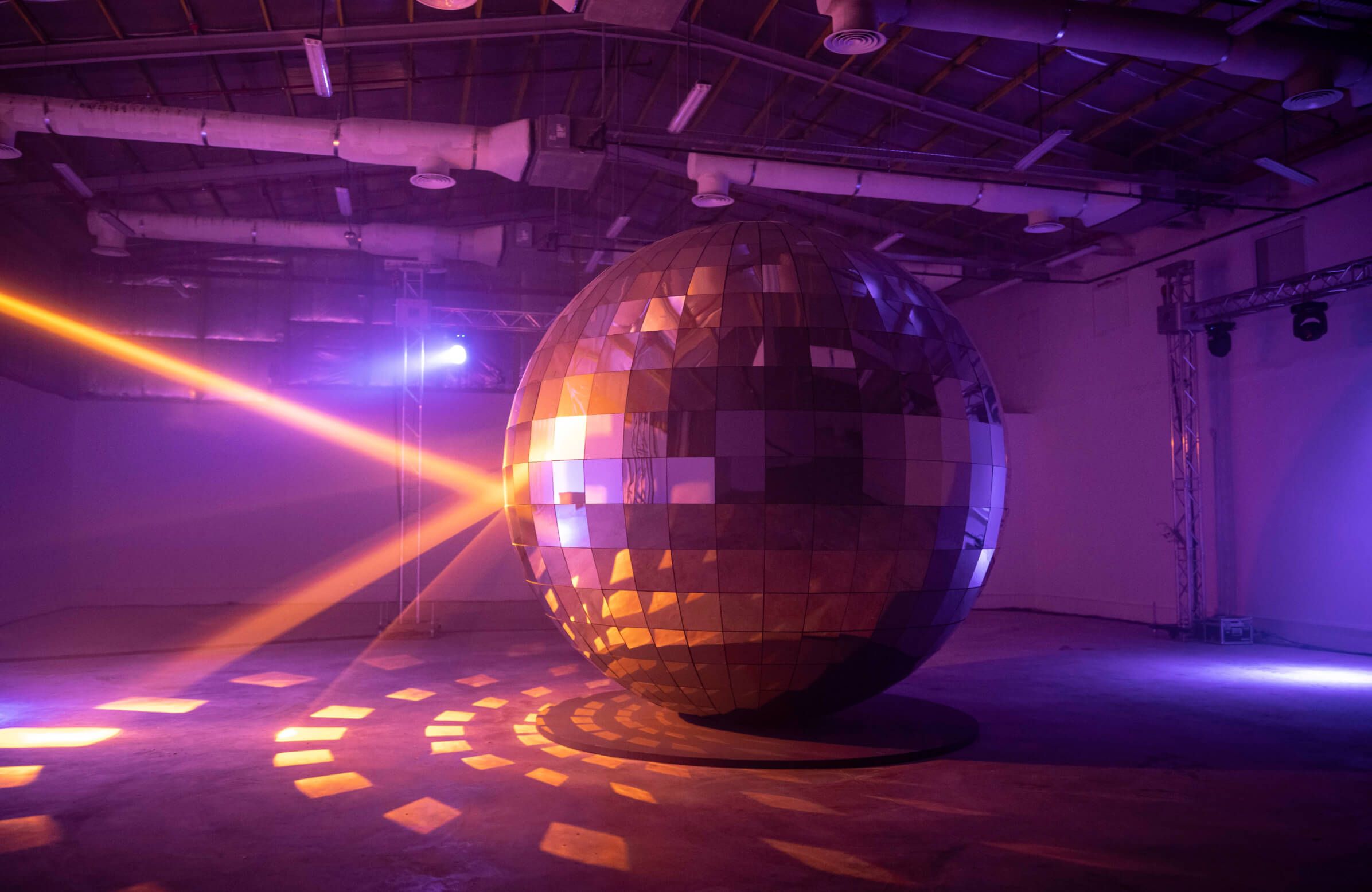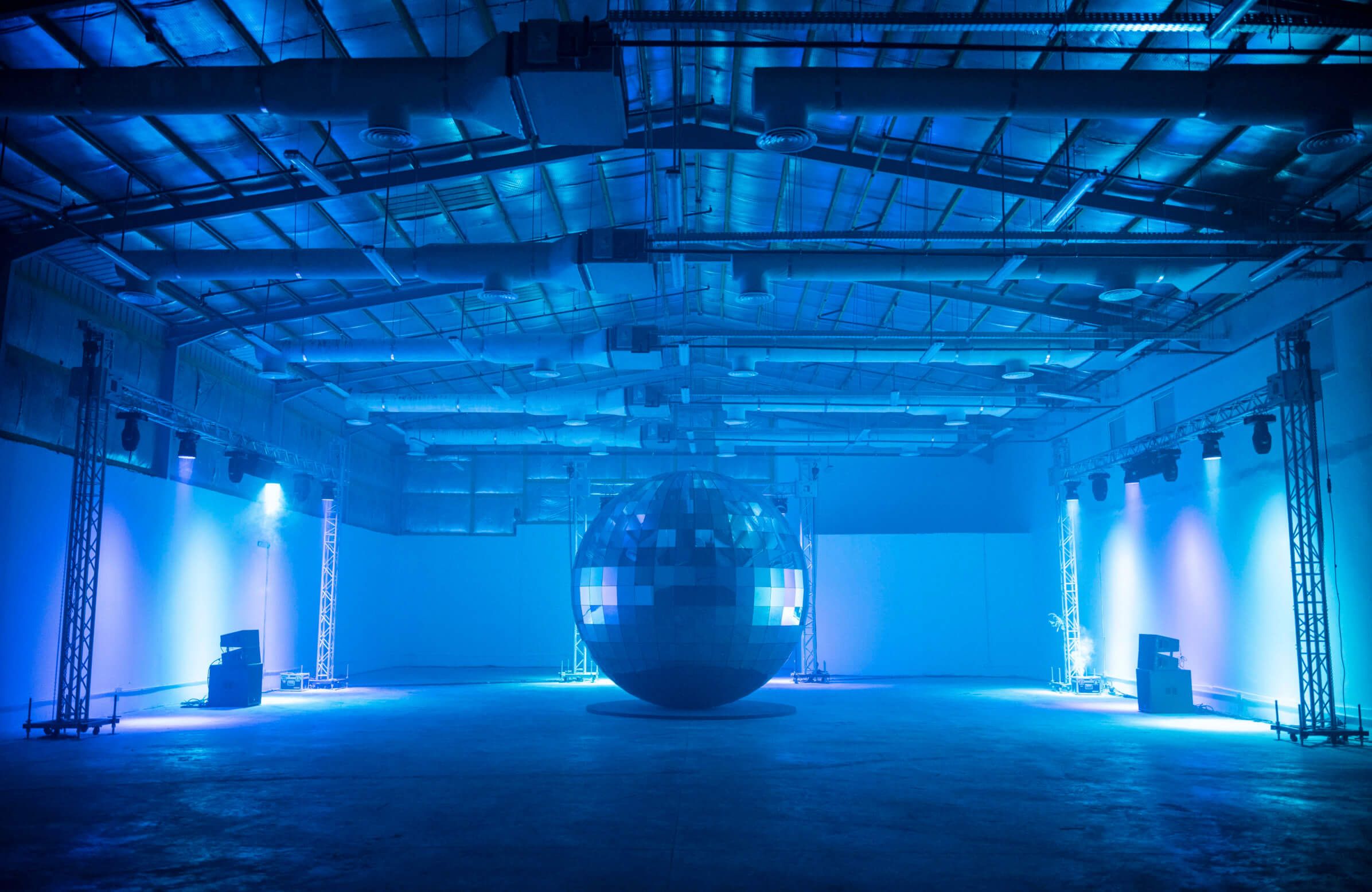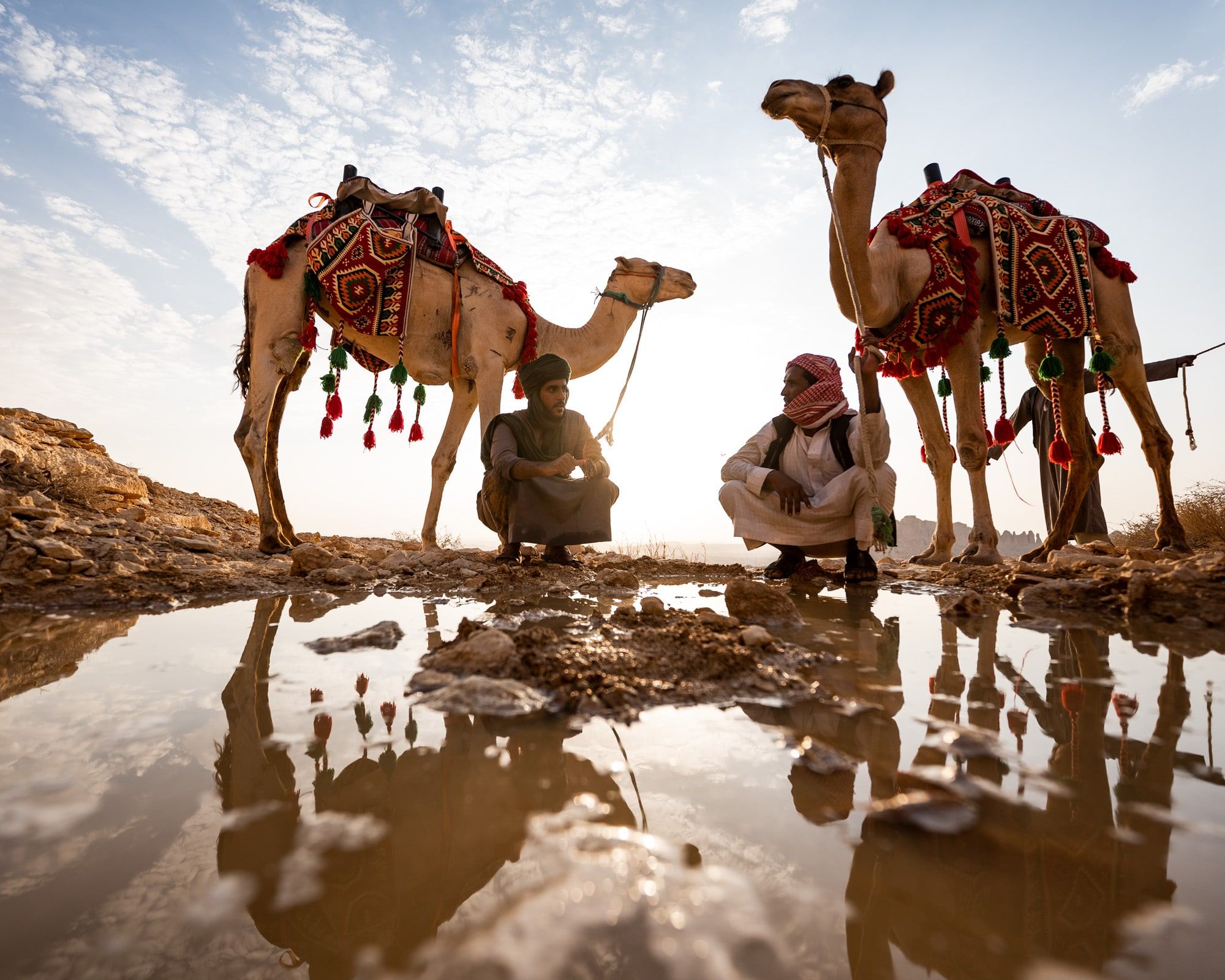Art, Music, Dance & Space
THE VOICE OF LISTENING, 2022, Courtesy of the artist Zahra Bundakji.
Music has become an integral part of public life and with music comes dancing. We have now created beautiful moments where bodies are moving and exploring the space they exist in time with music that reflects our existence. Music and dance aren’t new; it is part of our identity. We constantly dance, creating a movement with our bodies. In order to dance, we explore rhythms, creating them from the tones of our voices or with instruments. We have traditions, heritage, and experiences that prove music is our blood as much as poetry and spoken word. They are parts of our story.
The visual artist Zahra Bundakj is a multidisciplinary research-based artist focused on ethnographic explorations through art. Her current interest is in dancing and music in private and public spaces. Yet art is the viewpoint from which she understands music and dance and analyzes them. So understanding what art means to her seemed like a natural starting point.
“Art is a multifaceted thing that means different things to different people,” and that is where her fascination with art lies. She explains how it can range from a market to a status symbol, from entertainment to patronage, and from a means of expression to a practice. Some people view art as a cultural phenomenon, “cultivating heritage, learned and shared experiences” or “as an empty vessel to fill with meaning”. The idea is that art can be a world of its own, especially “when you see how different art is based on where the person is standing.”

THE VOICE OF LISTENING, 2022, Courtesy of the artist Zahra Bundakji.
Yet she views art and uses it differently: “The way I use it: it is a communicative medium. It is a way to depict the world so it can see itself.” It starts off as a point of reference that snowballs into an entire research project and she considers the art side of it as an accessible visual depiction of the research.
Zahra’s understanding of art and practice is a product of her influences. From Baskiat to Andy Warhol, she understands each artist’s effect on the contemporary art scene and how they played a role in creating an art scene that goes beyond just the artworks – as she might not like their art but admire their effect on art history – like “meshing social life with their art practice”.
When asked what artists have influenced her practice, she had a few names ready, like Saskia Noor van Imhoff, an installation artist that uses her work as a way to mark the time; Etel Adnan, for her presence and impact; and Reem Alnasser, for surpassing her social circles and worked pass her traumas.
Her admiration for these artists and their practice pushed Zahra to be a perfectionist in her process, but she has recently switched out to a motto that is a throwback to Nike's “Just Do It”. As she bases her art on research, she would do “so much research and fieldwork that I would either burn out, lose research, or not know how to communicate it through visual arts,” because of the depth and size of the research. Her practice had to evolve. “It’s become less of just do it to keep doing it.” It is now an artwork representing every step of her research until it reaches its natural conclusion.
These elements are mantras and practical ways that help Zahra push away from obsessively researching and producing more artworks. Part of that is to “keep writing and create new ways of thinking and seeing.” In that spirit, her methods are also ways new upcoming artists can develop their practice. Her world is built on creating genuine friendships with people in the art world and that “builds more connection than networking”, which is what she recommends everyone does, especially if this friendship is critical and can help each other build their practices and understanding of their work.
When it comes to music, Zahra has always enjoyed it. It was part of her home life, the way her family bonded as “everyone played an instrument,” and it was part of her social life. So music to her is “an insanely social creative medium.” Her admiration of the medium isn’t solely for the beautiful sounds it creates but because this ephemeral thing “transcends all social classes, race, gender and it is also a solution to a lot of issues” we face as a society.

THE VOICE OF LISTENING, 2022, Courtesy of the artist, Zahra Bundakji.
When speaking about her research into nightlife, music, and art, as part of her The Voice Of Listening, the disco ball is the conclusion of her study for that particular iteration of her interest in the spaces music creates. Her research isn’t solely about music but about “everything that music impacts.” Her work is an amalgamation of the different experiences of music, from the joy it induces in people to the architectural phenomenons surrounding it.
“Music is cultural but it is also architecture.” Part of it is the urban planning of different events and permanent spaces as well as private spaces. Music and nightlife have affected so much of our lives in “the ways we volumize our sounds and voices.” It has always been a part of the “fabric of our society that we don’t see.” In this sense, music has always been part of our rituals and daily lives, from getting ready to the morning drives, like listening to Fairouz in the morning or dancing while cooking.
However, to her, “Music isn’t just entertainment, leisure, and party but is also practice and culture, and deserves a permanent space.” To understand it intrinsically, you have to, “listen to these words; to these experiences and perspectives. Especially with music, music has to exist, especially dance and electronic music needs to exist outside or to be seen beyond the party experience.” For it to exist beyond, “the missing piece … is listening.” so for people to listen to the music they need to experience it in a meaningful and educational way.

THE VOICE OF LISTENING, 2022, Courtesy of the artist Zahra Bundakji.
Zahra’s work isn’t monolithic. “I have so many photos and recordings that are little artworks of their own.” Part of her work is producing music, observing people, interviewing them, and taking videos and notes. All of those are little ways she builds up towards smaller and larger artworks that speak to one area of interest and accumulate together into a body of work. So her practice is shifting to become consistently a product of her research, not just a response to an exhibition or an opportunity.
In a sense, the disco ball was a production to bring people into the space and experience the music and the research done. “My visual art is the cheese in the mousetrap so people could come and read my research.” The idea is she creates another world for her artwork to make sure that it floats and becomes an experience to transmit her research as information to her audience.


